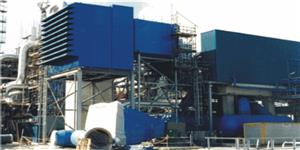FLO DYNE CONTROLS INDIA P.LTD.
Featured Products
Highest quality standards are achieved through the implementations of latest technology, decades of experience and everlasting moral values , which have helped us to retain our customers as well as multiply them.
Welcome to FLO DYNE CONTROLS INDIA P.LTD.
Bladder Tanks

Bladder tanks are usually supplied in one of two configurations and are used to reduce pressure surges in pipelines.
AIR IN BLADDER
The air charge is contained within the bladder inside the tank. The air charge does not come into contact with the liquid in the tank and so cannot be absorbed. Air charge losses due to absorption are therefore minimal.
The pumped liquid from the main flows into and out of the main tank, it will come into contact with the tank walls and so compatible materials must be selected.
The bladder is often made from a highly elastic rubber, such as butyl rubber, and may be sized to expand to fit the entire vessel. The bladder will typically be pre-charged at installation with a pre-determined pressure to give the correct operating level in the tank when the unit is connected to the main and at the operating pressure.
There must be an anti extrusion plate fixed at the outlet from the vessel to prevent the bladder from being drawn into the main at low pressures. The anti-extrusion plate and inlet size must be selected so that they do not impose a restriction on the flow into and out of the vessel, otherwise the unit will not function correctly as a surge tank.
[SWB sketch]
WATER IN BLADDER
The air charge is contained within the tank, whilst the liquid from the main flows into and out of the bladder. Like the air in bladder design, the liquid does not come into contact with the tank walls nor the air charge, so again, the air charge cannot be absorbed by the pumped liquid and so air losses due to absorption are minimal.
The pumped liquid from the main flows into and out of the bladder and will not come into contact with the tank walls, again compatible materials must be selected.
As for the air in bladder design, the bladder is often made from a highly elastic rubber, such as butyl rubber, and may be sized to expand to fit the entire vessel. For this design the whole tank is pre-charged at installation with a pre-determined pressure to give the correct operating level in the tank when the unit is connected to the main and at the operating pressure.
Again, there must be an anti extrusion plate fixed at the outlet from the vessel to prevent the bladder from being drawn into the main at low pressures and like the air in bladder design, the anti-extrusion plate and inlet size must be selected so that they do not impose a restriction on the flow into and out of the vessel.
STANDARD FITTINGS
Each bladder vessel comes with these
standard features:
[installed bladder tanks]
Safety relief valve;
Pressure gauge;
Air fill valve;
Anti-extrusion plate;
Drain connection;
Butyl bladder.
OPTIONAL FITTINGS
Any bladder vessel may be fitted with the
following optional features:
Level gauge;
Level transmitter;
Pressure transmitter;
Drain valve.
CONSTRUCTION AND MATERIALS
Flo-Dyne bladder vessels are pressure vessels and as standard are manufactured in ordinary carbon steel, low temperature carbon steel or 304/316 stainless steel to the requirements of PD5500, ASME VIII. We will CE mark the equipment if it is to be used within the European Union, if the equipment is to be used elsewhere we will apply a CE mark if requested.
Our Vision
* To embrace new technologies and methods. * To give unsurpassed products and services to the clients. * To constantly look for improvement and changes.










